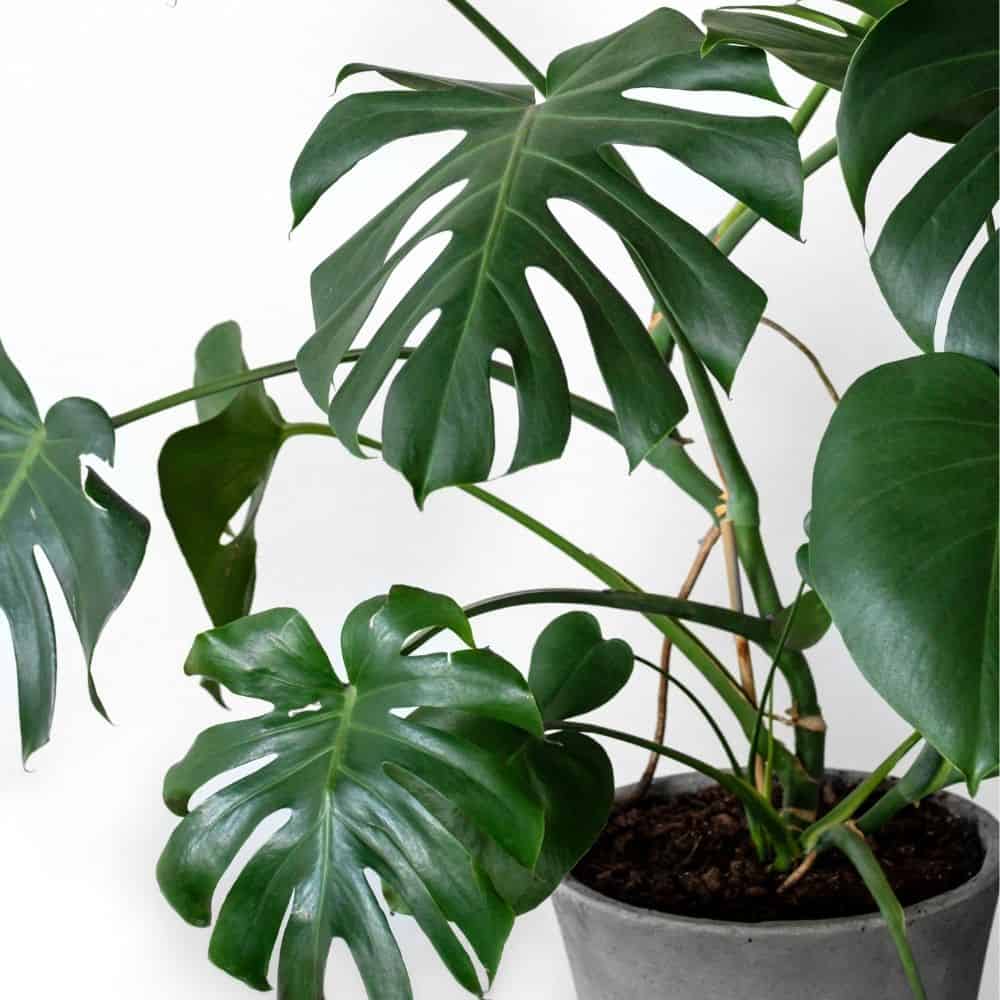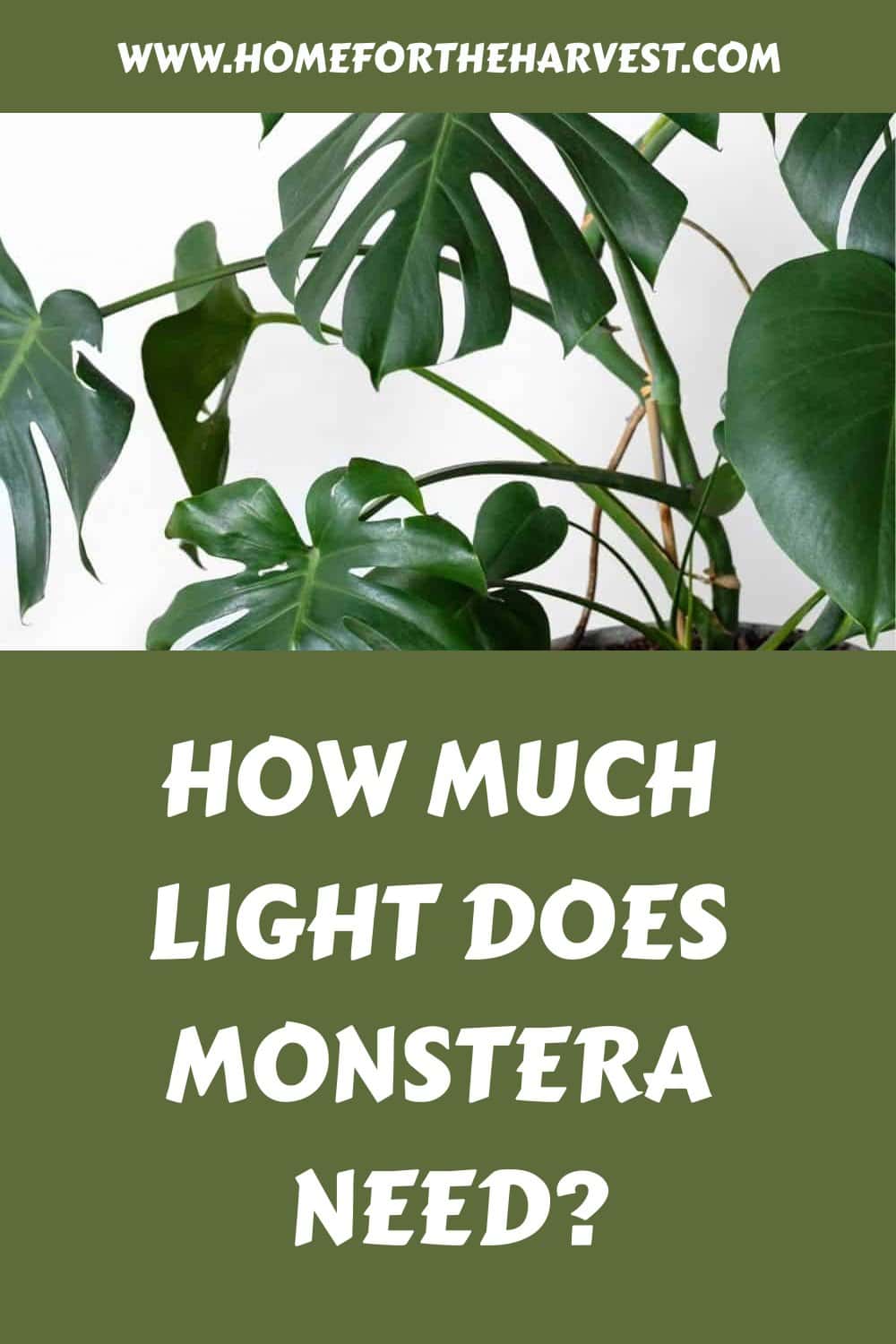Leafy Monsteras are famous around the world as beautiful indoor plants and for their fenestrated leaves. The key to keeping the leaves large, lush and full of holes is sunlight.
Monstera plants need a full day of indirect, bright light to look their best. In low light, the leaves will likely wilt and begin to yellow. In direct sunlight, the leaves are at risk of burning. Don’t forget to rotate your pots around once a week to ensure all parts of the plant receive the same light exposure.

Monsteras native habitats
The Monstera genus is full of fascinating leafy plants. You may also see them called Swiss Cheese Plants after the interesting holes in their leaves. If you’re lucky, you may spot the fruit they produce in the right conditions, although this isn’t very common indoors.
Monstera plants hail from the tropics (like most houseplants). Natively, they are concentrated around Central America, moving down into the north of South America. The tropical plants grow in low-lying forests, usually found on forest floors and climbing up nearby trees to take advantage of the higher light levels.
The sunlight they receive in these areas is dappled light. Sunlight will peak through the trees overhead, partially covering the foliage. This is also why scientists believe Monstera plants developed fenestrated leaves – to extend their surface area and receive as much sunlight as possible.

How much light does a monstera need?
The light source our houseplants receive indoors is very different from what they would find in their native habitats. The strength of the light, filtered by curtains and obstructed by furniture, is much lower than bright light outdoors. The cover they receive is also not the same as the lack of trees overhead. That’s why we have to translate the natural light they receive in their native habitats to what is available indoors.
Dappled light outdoors generally translates to moderate to bright indirect light indoors. This is the light found right near east, south, or west-facing windows but out of the path of any direct sunlight. As Monsteras climb trees to obtain as much sun as possible, they require as much bright indirect light as you can manage in order to grow and thrive.
Light intensity is also key to maintaining the fenestration in the leaves. A Monstera in moderate to low light may not die immediately or show signs of struggle, but any new leaves that do pop up (if any) will likely be solid green. This can also happen if you forget to rotate your pots, leaving one side with fenestration and the other side solid.
Aim for a position in front of an east-facing window for the best growth. This will give the plant some gentle direct morning sun, with low light that isn’t too harsh, providing protection during the hottest parts of the day. If you live in an area with intense sun all day, avoid the direct light altogether, filter with a shear curtain, and provide low light to protect the leaves from burning.
Quick tip: Try installing a grow light as a regular light fixture, to control the light intensity and position for lighting! This is also an opportunity to use blue or red light which may help with Monstera’s growth.

What happens when the light is too low?
As mentioned, the first issue you will notice when the light is too low is a lack of holes in the leaves. While this isn’t an immediate problem, it does mean you may encounter more problems with growth later on.
In extremely low-light areas, the plant will likely grow very slowly and stop putting out new leaves. It may even stop growing altogether, signaling its demise if conditions are not improved. You may be tempted to fertilize or repot at this time to fix the growth problems, but this will only end up doing more damage.
When light is low, evaporation is also far slower. This usually leads to problems with overwatering. Monsteras are incredibly sensitive to root rot and cannot sit in water for long periods. In these cases, the leaves will begin to wilt and yellow, requiring repotting to resolve the problem.
What happens when the light is too high?
On the other hand, too much light is also a bad thing. As Monsteras are accustomed to filtered light in their native habitats, they cannot handle the direct sun well. If the delicate leaves are exposed to direct sunlight, especially intense midday or afternoon direct light, the leaves can burn in just a few hours, leaving permanent brown marks.
Affected leaves will also begin to wilt due to the damage of the high light levels. The soil will likely dry out quicker too, meaning you’ll need to water more often to bring the plant back to good health.
Tips: How to fix lighting issues?
If you find the lighting for your Monstera is either too low or too high, you’ll need to move them to a more suitable area with a full day of bright indirect light. However, it’s important not to make this change too suddenly. Any dramatic changes in light can result in stress, making your existing growth problems even worse.
Instead, change the conditions slowly to allow the plant to get used to the new light. In the case of direct light, you can simply filter it with a curtain during the hottest part of the day, taking advantage of the morning sun to maximize growth. After a week or two, your plant should be adjusted and ready for its new position.








